'Assassin' Captures a New Supernova, and Photographers Take Aim
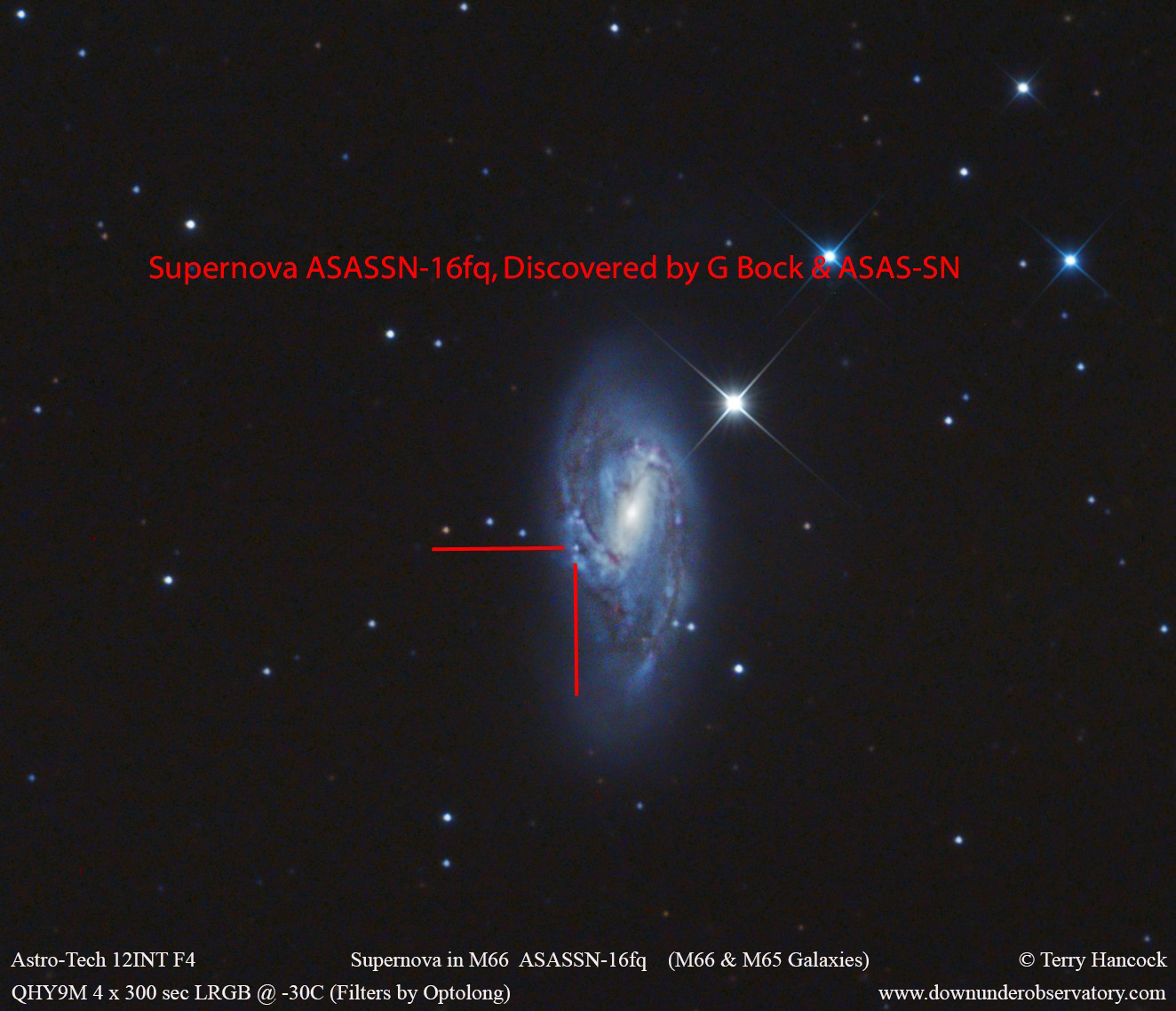
A star exploded over the weekend. Or rather, the exploding star became visible to telescopes on Earth, and was spotted by a dedicated search for these stellar outbursts.
In the galaxy M66, about 35 million light-years from Earth, according to NASA, a star somewhere between 8 and 50 times the mass of the sun reached the end of its fuel supply. Without its internal furnace running, the star begins to implode. The in-falling material, combined with an increasingly hot core, caused the dying star to explode into a Type II supernova.
This particular supernova was spotted by the All-Sky Automated Survey for Supernovae (ASAS-SN, which is pronounced "assassin"). Using a total of eight telescopes in two different locations, ASAS-SN surveys the sky for the sudden appearance of very bright spots of light, which could be supernovas. [Supernova Photos: Great Images of Star Explosions]
On May 28, ASAS-SN spotted the supernova in M66. The image below shows the galaxy before and after May 28, and the clear appearance of a new object, which is now named supernova ASASSN-16fq.
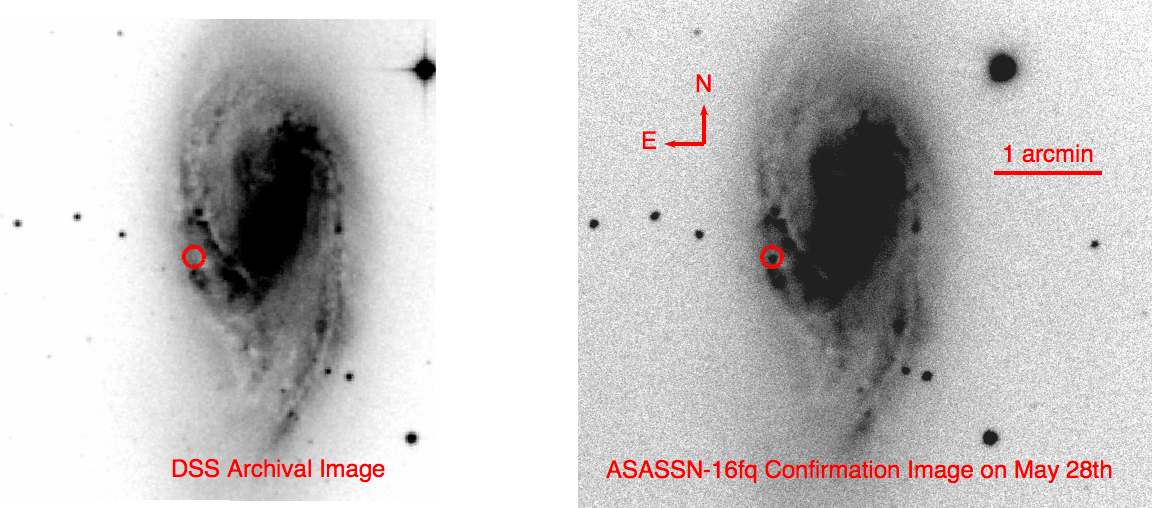
Galaxy M66 is located in the constellation Leo in the night sky, and stretches about 100,000 light years across. The median distance of M66 is closer to 31 million miles, according to the NASA/IPAC Extragalactic Database.
M66 is the largest and brightest member of the "Leo Triplet" of galaxies (or the M66 group) that also includes M65 and NGC 3628 (the latter of which is nicknamed "the hamburger galaxy"). The positioning of the three galaxies may have influenced the layout of M66, as seen in the Hubble image below.
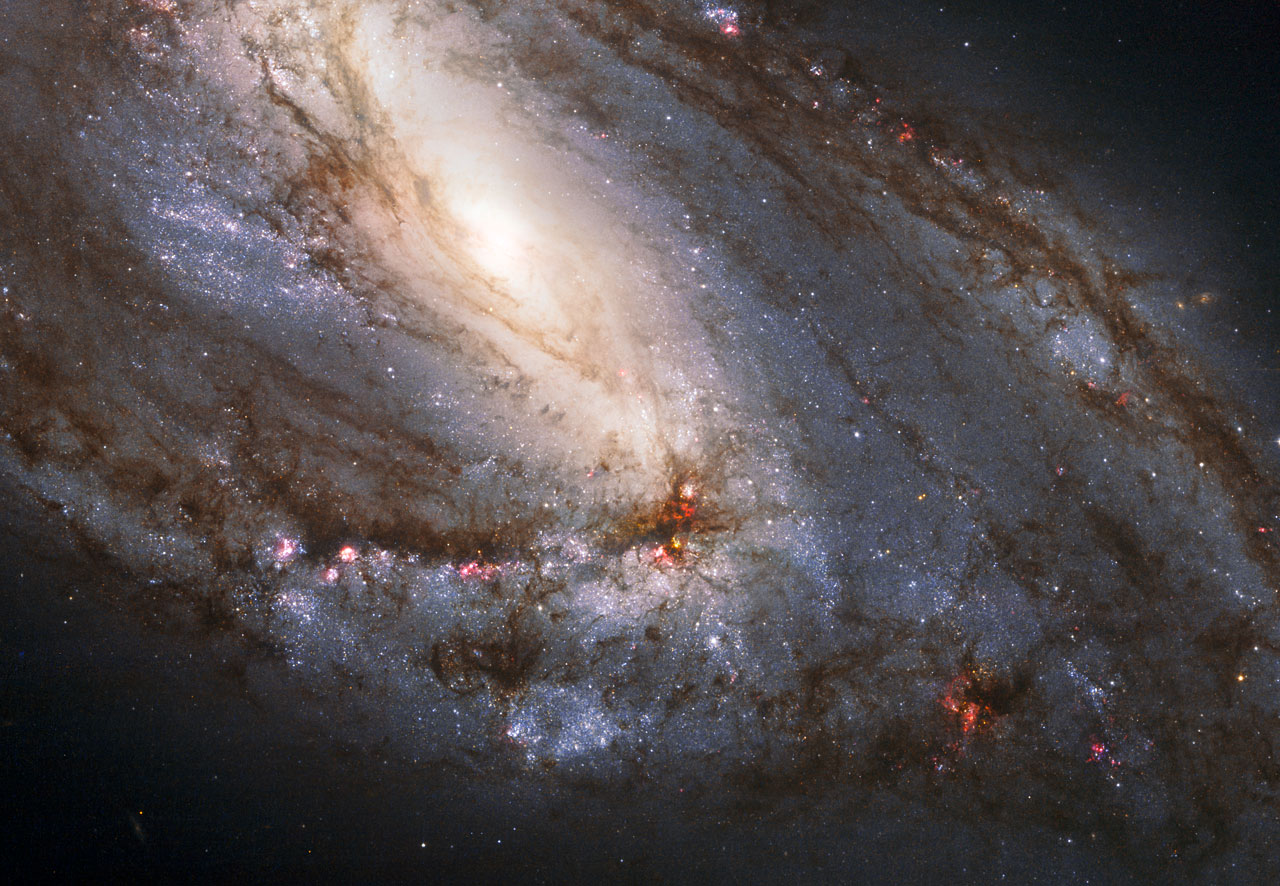
Hubble's view shows that M66 is "a galaxy with an unusual anatomy: it displays asymmetric spiral arms and an apparently displaced core. The peculiar anatomy is most likely caused by the gravitational pull of the other two members of the trio," according to the European Space Agency's Hubble Space Telescope website.
Get the Space.com Newsletter
Breaking space news, the latest updates on rocket launches, skywatching events and more!
Night-sky photographer Terry Hancock heard about the discovery of a new supernova and quickly turned his own telescopes toward M66. In the top image of this article, Hancock uses two red lines to pinpoint the location of the supernova. The wider view below shows M66 and its nearby galactic neighbor, M65. The image was captured over 80 minutes of exposure time, using the using the new Astro-Tech 12INT F4 12" Truss Tube Newtonian, Hancock told Space.com.
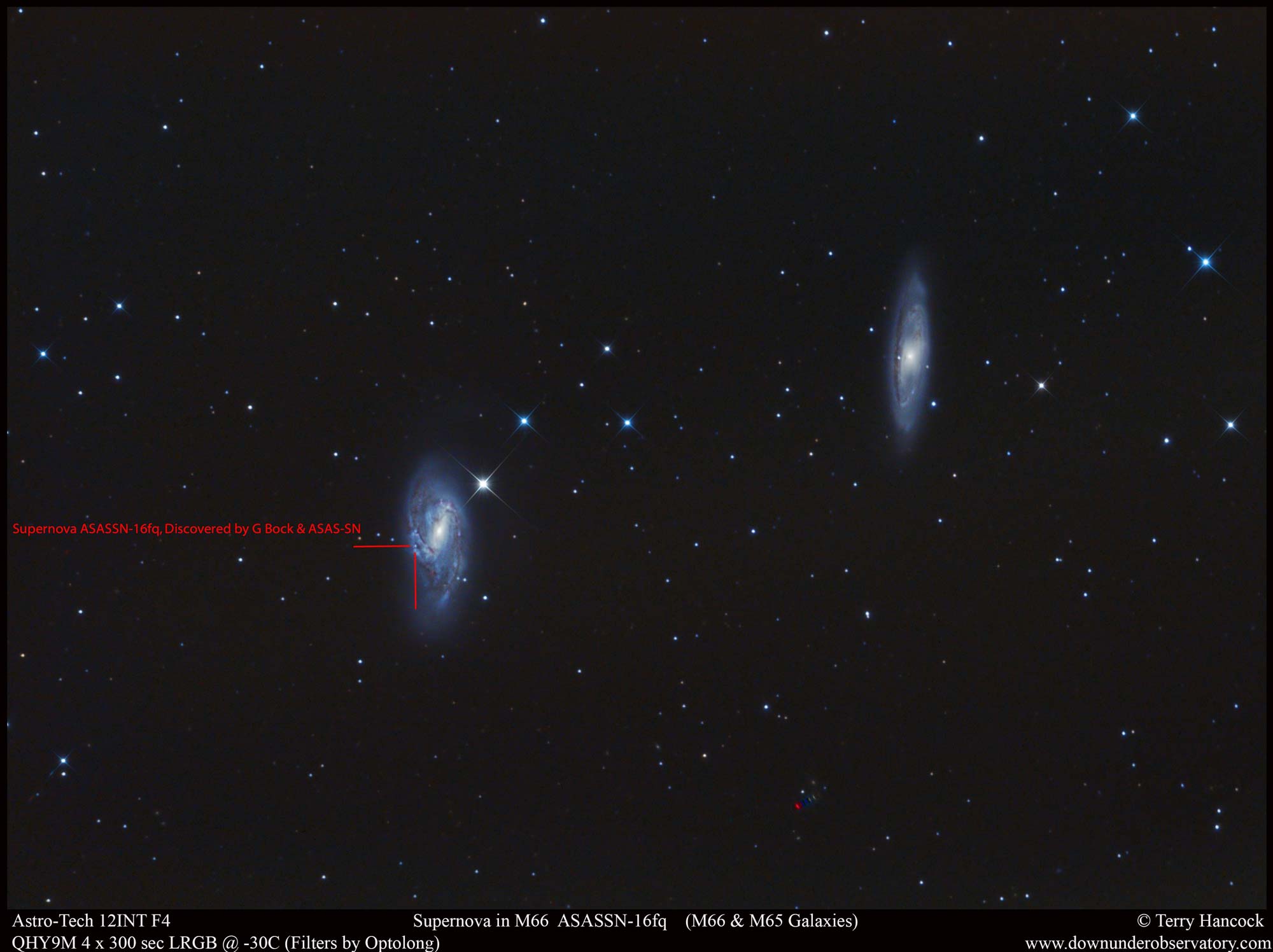
Hancock also told Space.com that in the red dot in the lower-right portion of the image is the main belt asteroid 28 Bellona. This provides an interesting size comparison, because 28 Bellona is smaller than Pluto, but is about 30 million light years closer to Earth than M66. You can find more of Hancock's amazing photographs in his book, "The Armchair Astronomer."
The supernova was also imaged by astrophysicist Gianluca Masi via the Virtual Telescope Project, as seen below. White lines also denote the location of the supernova. Note that the view of the galaxy is oriented differently than some of the images above, so the supernova appears in the upper left of the galaxy, rather than the lower left. The image is "the average of 11, 120-second exposures," according to Masi.
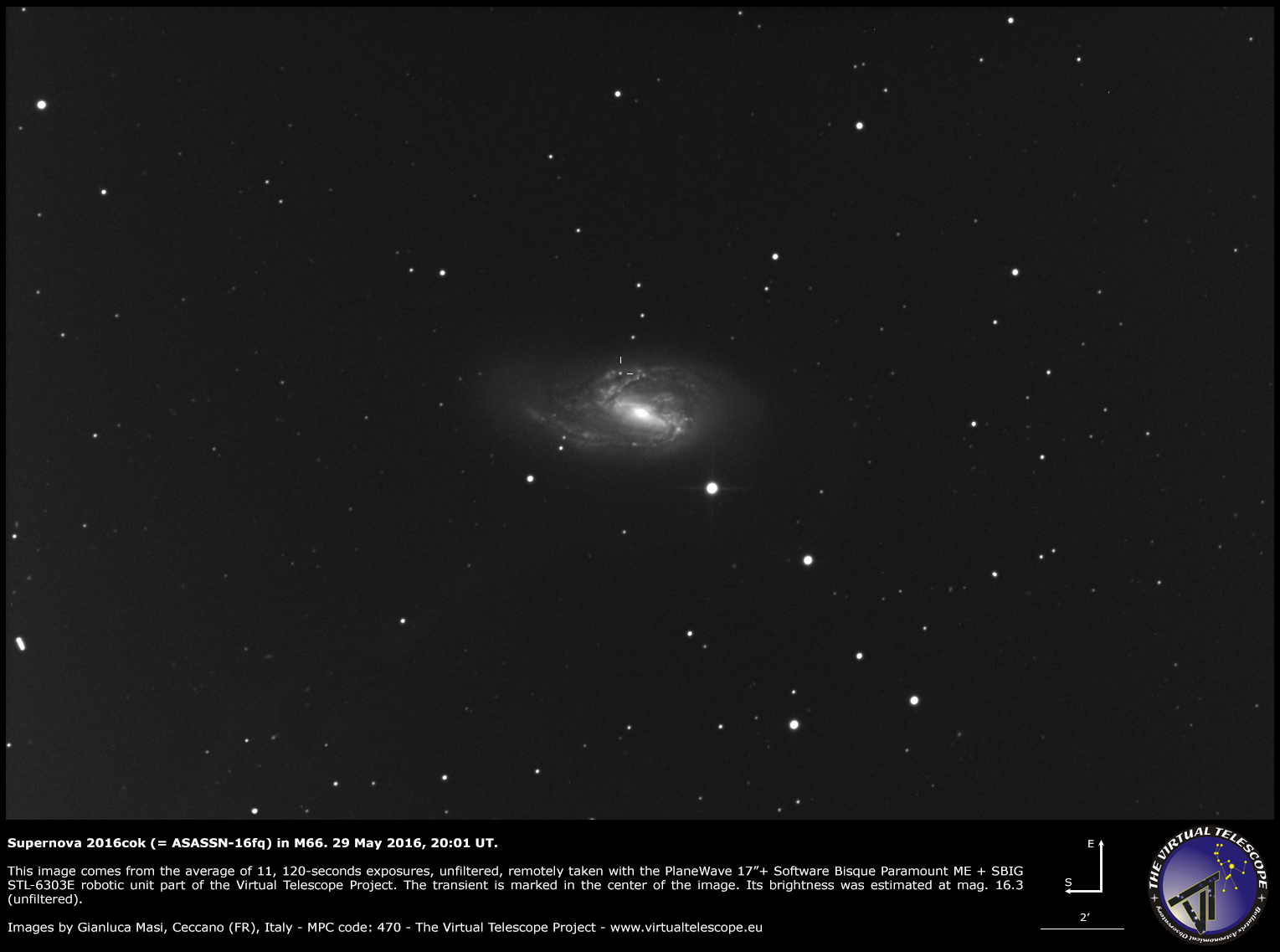
[Editor's Note: The Hubble image of M66 was released in 2010, not 2019, as was previously stated in the image caption.]
Follow Calla Cofield @callacofield. Follow us @Spacedotcom, Facebook and Google+. Original article on Space.com.
Join our Space Forums to keep talking space on the latest missions, night sky and more! And if you have a news tip, correction or comment, let us know at: community@space.com.

Calla Cofield joined Space.com's crew in October 2014. She enjoys writing about black holes, exploding stars, ripples in space-time, science in comic books, and all the mysteries of the cosmos. Prior to joining Space.com Calla worked as a freelance writer, with her work appearing in APS News, Symmetry magazine, Scientific American, Nature News, Physics World, and others. From 2010 to 2014 she was a producer for The Physics Central Podcast. Previously, Calla worked at the American Museum of Natural History in New York City (hands down the best office building ever) and SLAC National Accelerator Laboratory in California. Calla studied physics at the University of Massachusetts, Amherst and is originally from Sandy, Utah. In 2018, Calla left Space.com to join NASA's Jet Propulsion Laboratory media team where she oversees astronomy, physics, exoplanets and the Cold Atom Lab mission. She has been underground at three of the largest particle accelerators in the world and would really like to know what the heck dark matter is. Contact Calla via: E-Mail – Twitter









